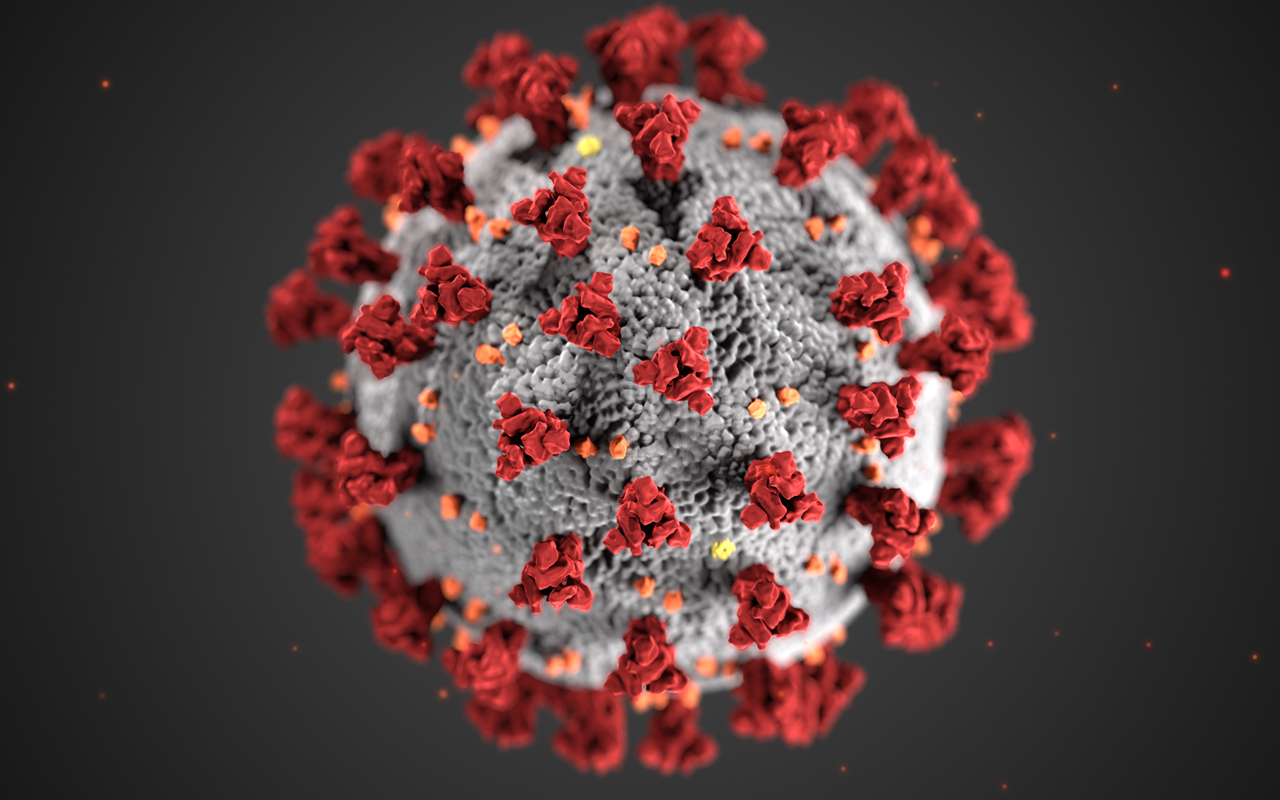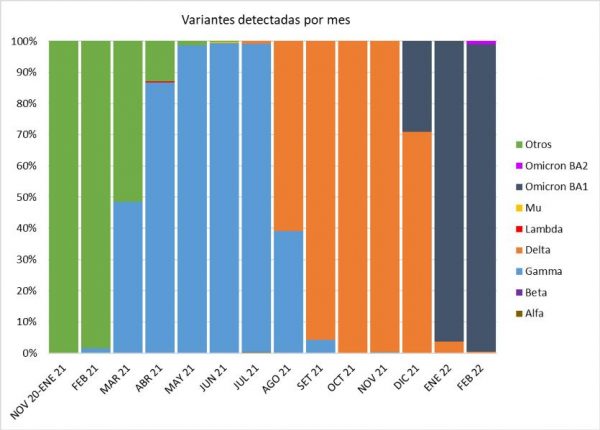On its first year monitoring SARS-CoV-2 variants in Uruguay, the Inter Institutional Working Group on Genomic Surveillance of SARS-CoV-2 (GTi) —comprising researchers from the Institut Pasteur Montevideo and the Republic University— identified the appearance and disappearance of at least five types of Variants of Concern (VoC), developed an innovative variant-identification tool and helped the national government devising overall and vaccination strategies.
In its most recent report, February 2022, the group announced that omicron variant displaced delta, the predominant variant for the last two months. This report also identified five samples of BA.2, a sublineage of the omicron variant. Only one of these samples belongs to a person who reported having travelled.
Gathering and working together
One year after the start of the coronavirus pandemic in Uruguay (March 2020), more than 20 researchers from Institut Pasteur de Montevideo and the University of the Republic, together with experts from Sanatorio Americano, the biotech laboratory ATGen and the Ministry of Public Health created a working group to monitor in real time the genomic information of the variants of the virus circulating in Uruguay.
Within the Institut Pasteur de Montevideo (IP Montevideo), the researchers that take part of the group work at the Center for Innovation in Epidemiological Surveillance (CiVE), the Bioinformatics Unit, the Microbial Genomics Laboratory and the Experimental Evolution of Viruses Laboratory.
Their work is based on Covid+ samples taken at a network of national health facilities and sent by the Ministry of Health to the IP Montevideo. These samples undergo an initial qPCR screening for the detection of the variants of interest. The group also sequencing a portion of the samples (around 25%) to confirm the data.
Based on these results, the GTi can identify, for example, the predominance of a variant circulating in the country, a key information for planning the national health response. For this reason, the group releases a periodical report to share this relevant information with the national health authorities.
A local qPCR innovation
A core part of the GTi group is the identification of variants of a positive sample. Usually, the genome sequencing is the standard tool for doing this, but in the pandemic scenario, the GTi developed a particular qPCR capable of doing this differentiation in a much simpler step.
Gonzalo Moratorio and Pilar Moreno, members of the group, worked together with their team, firstly, produce a local qPCR diagnostic test based on several academic protocols but adding some key innovations. “We did two things: on the one hand we brought the reaction to a single tube with all the internal controls (if the test actually works and if the SARS-CoV-2 genome is detected or not); and on the other hand, we used buffers, that is, liquid solutions to speed up the result,” Moratorio told to the press.
This “national qPCR test”, announced one month after the pandemic started (April 2020), gave Uruguay independence from the rest of the world when it came to continue testing.
But after that, the group kept working on improving the qPCR method and they created a particular qPCR that could also identify variants. This test is still the central piece of the GTi task.
A tale of many variants
At the beginning of its work in March 2021, the GTi detected that the gamma variant overcame the original Wuhan strain as the dominant type of coronavirus circulating in Uruguay. Gamma —formerly called P1— was a form of the SARS-CoV-2 virus that appears to have evolved in Brazil and might have contributed to the surge in cases in the region during the second half of 2020. In Uruguay, this variant remained the dominant until August 2021.
In September 2021, the rapid escalation of delta displaced gamma, and it remained as the predominant variant in Uruguay until December 2022. In February 2022, when the country entered a record daily-new cases scenario since the start of the pandemia, GTi found that the new omicron variant appeared in January and quickly displaced delta. In this last report, 99.5 % of the analysed samples turned out to be omicron.
Nowadays, the group is working on its next report, that will monitor the omicron circulation and it will keep observing the appearance of new ones.



